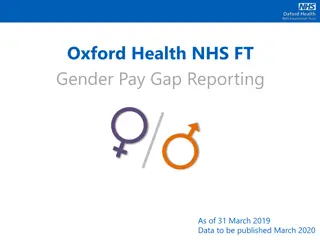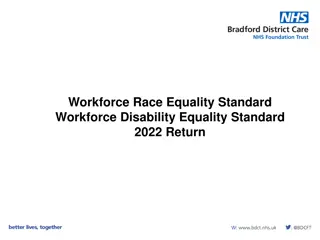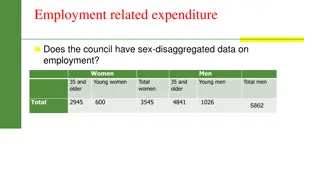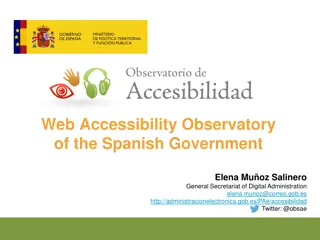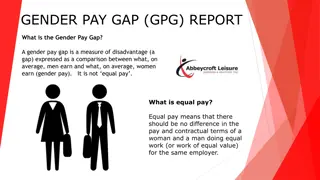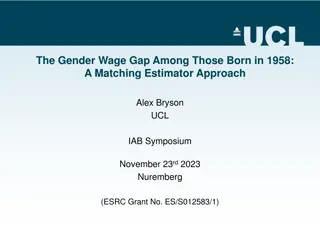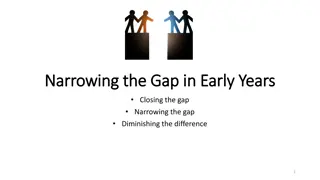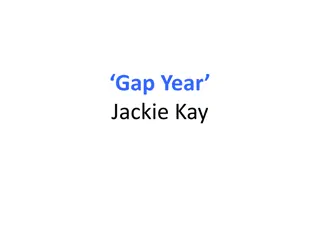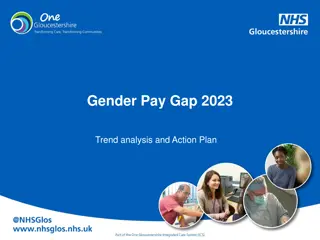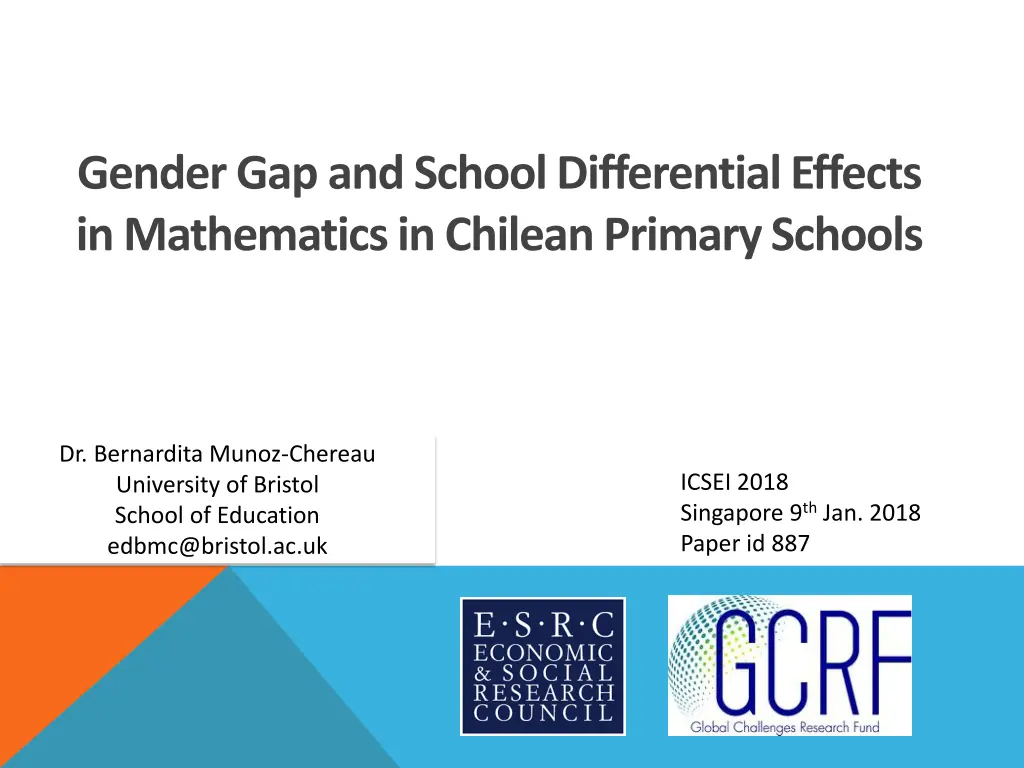
Gender Gap and School Effects in Mathematics: Chilean Perspective
Explore the gender gap in mathematics within Chilean primary schools, highlighting the disparity between boys and girls. International evidence shows varying gender differences across countries, with Chile demonstrating significant gaps favoring boys in math and science. The concept of Absolute Gender Gaps and Differential Effects emphasizes the importance of considering school experiences in understanding gender differences in academic achievement.
Download Presentation

Please find below an Image/Link to download the presentation.
The content on the website is provided AS IS for your information and personal use only. It may not be sold, licensed, or shared on other websites without obtaining consent from the author. If you encounter any issues during the download, it is possible that the publisher has removed the file from their server.
You are allowed to download the files provided on this website for personal or commercial use, subject to the condition that they are used lawfully. All files are the property of their respective owners.
The content on the website is provided AS IS for your information and personal use only. It may not be sold, licensed, or shared on other websites without obtaining consent from the author.
E N D
Presentation Transcript
Gender Gap and School Differential Effects in Mathematics in Chilean Primary Schools Dr. Bernardita Munoz-Chereau University of Bristol School of Education edbmc@bristol.ac.uk ICSEI 2018 Singapore 9th Jan. 2018 Paper id 887
GENDER GAPS: THE INTERNATIONAL CONTEXT Education quality cannot be accomplished without gender equity The gender gap is a key indicator to monitor in order to promote greater equity in the educational system The analysis of large-scale international educational comparative studies such as PISA and TIMMS- have consistently shown that gender gaps in mathematics achievement are not universal, but specific to the situations of girls and boys in particular countries (Else-Quest et al. 2010) Girls perform relatively better in maths and reading in societies where gender equality is enhanced, and this effect varies over the distribution of scores (Gonz lez 2012)
GENDER GAPS AGAINST CHILEAN GIRLS In Chile PISA has consistently reported a significant gender difference in favour of boys in math (OECD, 2004; OECD, 2015) and science (OECD, 2007), and only a small gender difference in favour of girls in reading (OECD, 2003; OECD, 2007; OECD, 2015). The magnitude of the Chilean gender gap is large, with 25 score points against girls (OECD average 11 points). Recently the Chilean gender gap in PISA mathematics against girls was 12% (OECD 2%), being the second worst of all participating countries (OECD, 2015). At the regional level Chile, in comparison with Argentina and Brazil, shows a disadvantageous pattern: the largest differences in favour of boys in math and science, and the smallest differences in favour of girls in reading (Manzi et al. 2008).
ABSOLUTE GENDER GAPS AND DIFFERENTIAL EFFECTS Absolute gender gaps ignore the variation in gender differences across schools, thus overlooking the impact of school experiences on gender differences (Ma 2008, p.443). DE has been defined as one of the three sub-themes of Educational Effectiveness consistency, along with stability over time and promotion of different educational outcomes (Sammons, Thomas and Mortimore 1997). Some schools may be more effective in promoting the progress of low SES than high SES pupils, or boys vs girls, or some ethnic groups more than others (Strand 2016, p.108). DE refers to internal variation of the school in promoting progress of different groups of students, after taking into account prior attainment and average differences between these groups. Examining DE in subgroups of students is seen as a step forward in the so-called "generic" models or "one-size-fits-all" approaches (Palardy, 2008).
INTERNATIONAL EVIDENCE ON DIFFERENTIAL EFFECTS Inconclusive, less consistent than evidence concerning school overall effectiveness and progress (Sammons et al. 1993) Limited and conflicting (Gray et al. 2004, p.535) Mixed (Strand 2016, p.109) Particularly the one referring to gender and ethnicity (Kyriakides 2004) Secondary Education Secondary Education Primary Education Primary Education Study Gender DE Study Gender DE Mortimore et al. (1988) Sammons et al. (1993) Goldstein et al. (1993) Kiriakides (2004) Strand (2016) No Thomas and Mortimore (1996) No No Thomas et al. (1997) No Gray et al. (2004) No No Strand (2010) Yes Crawford et al. (2017) No No No
METHODOLOGY In order to explore within and between school variation of Chilean primary schools in promoting attainment and progress for girls and boys and gender DE, a secondary data analysis of a national SIMCE sample was conducted. In order to capture the hierarchical nature of the data, multi-level regression models were fitted. Analyses were carried out using the MLWin software (V2.36) with pupils mathematics Year 8 test scores (level 1) grouped within schools (level 2) within municipalities (level 3). The sample consisted of 163,044 pupils in Year 4 up to Year 8 enrolled in 3,355 schools in 310 municipalities The analysis compares how the regression coefficients and Year 8 school effects change across Raw, CAM, Progress and VA.
RESULTS- FIXED PART Variables Cons Intercept RAW -0.163[0.02] -0.531[0.02] -0.062[0.01] CAM Progress VA -0.185[0.02] MathsY4(Z score) N/A N/A 0.612[0.00] 0.598[0.00] Girl 51-100 books at homme >100 books at home Middle Low SES Middle SES Middle-High SES N/A N/A -0.214[0.00] 0.141[0.00] N/A N/A -0.118[0.00] 0.059[0.00] N/A 0.231[0.01] N/A 0.103[0.00] N/A N/A N/A 0.089[0.02] 0.467[0.02] 0.964[0.03] N/A N/A N/A -0.01[0.02] 0.150[0.02] 0.398[0.02] High SES N/A 1.503[0.03] N/A 0.727[0.02] The effect for gender was in the expected direction: Girls achieved significantly less than boys in mathematics Year 8 ( 0.21 SD units) after adjusting for school SES and number of books at home (CAM). Girls also made significantly less progress than boys (-0.12 SD units) after adjusting for prior achievement, school socioeconomic status (SES) and number of books at home (VA). The effect of number of books at home and schools SES was in the expected direction.
RESULTS- RANDOM PART Intra School Correlation Total Variance Explained School Variance Explained (3L-Multilevel models Students within schools within Municipalities) Explanatory variables None (Cons) Raw Model 28.56% N/A N/A Student characteristics (Gender & n. of books in the house) and School background (School SES) Prior attainment (SIMCE Contextualised Attainment Model 14.15% 61.25% 22.78% 20.62% 64.25% 50.51% Progress Model year 4) 14.15% 77.97% 55.56% Value Added Model Students characteristics & Prior attainment The variance attributable to Municipality ranged from 5% (Raw) to 1.2% (VA).
Outcome & variable Estimate SE RESULTS- GENDER DE Estimates and SE for girls and boys Girl 0.055* 0.001 Boy 0.069* 0.002 *Indicates p<0.05 A significant small school variation in VA progress (0.055 for girls and 0.069 for boys) was found in relation to pupils classified by gender. An increase of 1 unit on Math Y4, increases the expected outcome examination score of Math Y8 significantly less for girls than for boys. Girls relative progress within schools was slightly less variable than boys progress. Differences in schools in terms of effectiveness played a significant role: schools that were progressing above expectations tended to have differential differences in favour of boys, and vice versa.
CONCLUSIONS AND DISCUSSION A small but significant gender DE in attainment and progress in Chilean primary schools was found. Despite this, the majority of Chilean primary schools keep (instead of reduce or improve) the gender achievement gap. Most of the mathematics achievement variation lay between students within schools. The Chilean gender gap needs to be addressed within, but also beyond schools. School gender DE is better understood as context specific. Future qualitative research could use these findings as a screening instrument to identify and explore school practices associated with DE, which in turn could provide timely information to tackle this issue.
Thank you! Dr. Bernardita Munoz-Chereau University of Bristol School of Education edbmc@bristol.ac.uk ICSEI 2018 Singapore 9th Jan. 2018 Paper id 887



